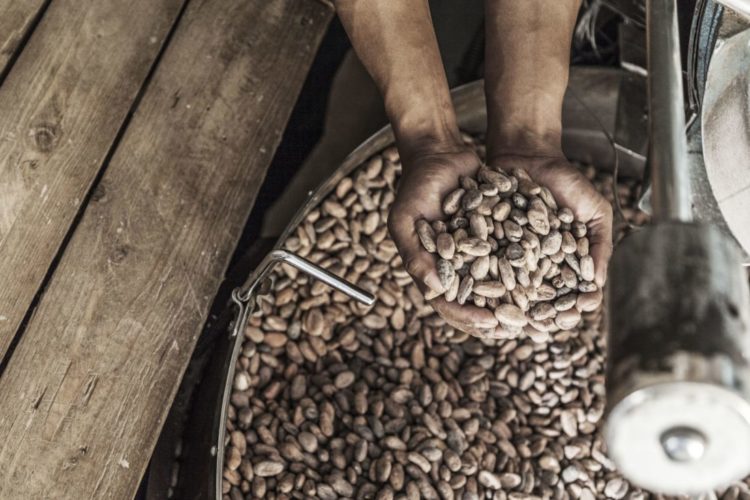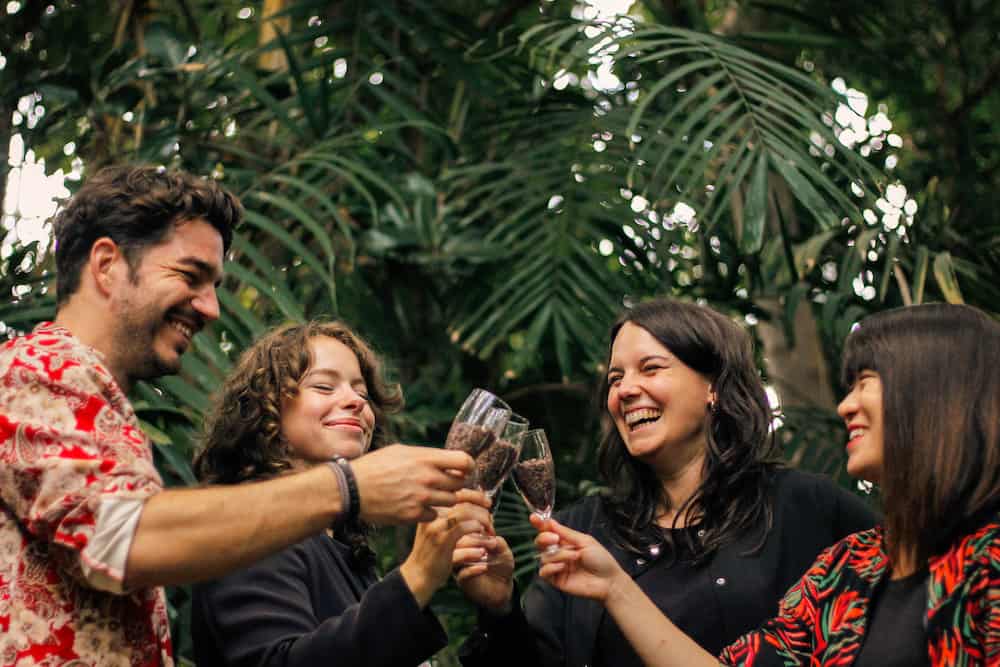A world without chocolate? For most of us, this is probably unthinkable: in Germany alone, the average per capita consumption of chocolate in 2019 was 9.2 kilograms . But chocolate as we know, love and consume it today has little to do with its original use. On the timeline of cocoa use, our way of enjoying chocolate makes up an insignificantly small section. According to the respected Nature Magazine, the history of chocolate, or cocoa, goes back over 5,500 years . Are you curious? In this article we summarize the history of chocolate for you.
South America – birthplace of chocolate
Even though Europeans are definitely the world champions when it comes to eating chocolate, the history of chocolate begins far away: in Central and South America. This is the home of the cocoa plant, from whose fruit, the cocoa pod, chocolate is made.
The Olmecs, who lived around 1,500 BC, are considered to be the first “chocolate connoisseurs”. BC populated the Gulf of Mexico region. This is indicated by traces of theobromine, the stimulant contained in cocoa, which have been found in vessels from this period. But the Olmec chocolate had little to do with our beloved chocolate. Instead of delicious tables and sweet cocoa drinks, they most likely made a fermented alcoholic drink from cocoa that was used in ceremonies.
The Olmecs did not only harvest the cocoa for their ceremonial drink in the wilderness. Current studies assume that they had already acquired knowledge about the cultivation of cocoa and were, so to speak, the first 'cocoa farmers'.
The Maya, specialists in cocoa cultivation
The Olmecs also passed on their cocoa knowledge to the Maya, who settled Central America at the same time and until the Spanish Conquista. And the Maya, it must be emphasized, definitely took cocoa farming to a new level. They planted extensive cocoa fields, which they even equipped with irrigation systems to maximize the harvest.
Because written records have survived from the Mayan culture, we know that they also used cocoa-containing drinks in ritual ceremonies. Mayan cocoa was often mixed with water, honey or chilli, served hot and had a thick and creamy consistency. But the enjoyment of chocolate was not just reserved for ceremonies: in many Mayan families, cocoa was drunk with all meals. The Mayan people also not only served chocolate as a drink, but also used it as a porridge or as a spice for various dishes.
And even back then, cocoa was valued for its stimulating effects. The fruit of the cocoa tree was also said to have aphrodisiac properties. In general, it can be said that cocoa was a kind of Mayan miracle cure. The fatty part of the bean, the cocoa butter, was used because of its disinfectant effect on wounds and skin irritations, or simply to care for the skin. The Maya also used cacao to treat illnesses such as measles and childbirth pain.
The Aztecs – the first “chocolate addicts”?
After the Olmec and Maya, the later advanced civilization of the Aztecs, who populated the Valley of Mexico from around 1300 to 1500 AD, were characterized by a strong passion for cocoa. Because they believed cocoa was a gift from the gods, cocoa consumption became more exclusive and reserved for the upper classes. “Normal people” could only enjoy the stimulating drink at special celebrations such as weddings. Unlike before, the Aztecs drank the cocoa cold. They also used cocoa as a medicine, similar to the Mayans, and sacrificed it to their gods.

Photo of an Aztec stone by Luis Domenech on Unsplash
The Aztecs considered cacao even more valuable than gold and the brown beans became a popular currency. For example, an avocado cost 1 to 3 cocoa beans and a rabbit cost 100 cocoa beans, which was also the daily wage of a porter. And because they viewed cocoa as so valuable, they guarded its warehouses and trade routes particularly closely.
The modern word 'chocolate' almost certainly comes from the language of the Aztecs - directly or indirectly . There are two theories: Some researchers assume that the Aztecs called cocoa chocolatl . The other branch, however, is certain that the name is based on an invention by the Spaniards, who combined the Aztec word cacahuatl, "bitter water", with the Mayan word chocol haa , "hot water", in the Spanish word chocolate .
Speaking of Spain
The Spanish played a central role in the subsequent history of chocolate. The southern European colonialists brought chocolate back to Europe from their trips to America in the 16th century . Who exactly is controversial. Some call Christopher Columbus himself, according to others it was the conqueror Hernán Cortés. It is certain that chocolate was known in Spain by 1544 at the latest. That year, the Dominican monk Bartolomé de Las Casas brought a jar of chocolate from Guatemala and gave it to the Spanish Prince Phillip.
Chocolate quickly became the new 'in drink' among the nobility of Spain. And as early as 1585, Spain began importing large quantities of chocolate. The cocoa drink became more popular and popular and from Spain the chocolate craze spread to the noble houses of Portugal and France and eventually throughout Europe .
Even though chocolate was initially only consumed as a thick drink, similar to the original method of preparation, people were already experimenting with new recipes back then. The first European cocoa drinkers added a lot of sugar to the drink due to the natural bitterness of cocoa. Spices such as vanilla and cinnamon also found their way into the cocoa pots.
Italy ultimately stood out for its culinary experimentation. On the one hand, chocolate was added as a spice to all kinds of dishes such as soups or polenta - very similar to the Maya. A particularly interesting Italian recipe creation was liver dipped in chocolate and then fried. However, the processing of cocoa beans changed only slightly until the 19th century and the beginning of industrialization. The grinding process of the beans in particular was labor-intensive and strenuous.
The dark side of the rise of chocolate
So chocolate became more and more popular and popular. In London alone there were almost 2,000 so-called chocolate houses in 1700. And interest in the sweet delicacy also increased in Germany. One of the first places where you could find chocolate in Germany was the coffee shop of the Dutchman Jan Jantz von Huesden in Bremen, founded in 1673 . For a long time, however, chocolate remained an expensive luxury good due to high cocoa prices, fueled by high import taxes on the beans.
But demand for the fruit of the cocoa plant, which still only grew in Central and South America, grew and grew. Because the European wars of conquest, imported diseases and forced labor cruelly decimated the indigenous population in America, local labor was scarce. In order to meet the ever-increasing demand for cocoa, numerous West African slaves were shipped to the cocoa growing regions. Specifically, there were between 15 and 20 million slaves who were torn from their home countries over 350 years to work for the colonial powers on the (cocoa) plantations of America .
A sad fact in the history of chocolate is that the cultivation of cocoa was - and still is today - characterized by exploitation of the local population and resources as well as inhumane working conditions.
The Industrialization of Chocolate - British Library
Milestones for chocolate as we know it today
Prince Wilhelm von der Lippe's factory near Hanover, built around 1760, is considered one of the first chocolate factories in Germany . According to the possibilities at the time, the chocolate was still made entirely by hand. Of course, later industrialization did not bypass chocolate production and marks another milestone in the history of chocolate.
In 1819, the French chocolate maker Pelletier and the British company Joseph Fry combined steam engine technology with chocolate production . And thus laid the foundation for a number of crucial innovations in the production of chocolate:
In 1828, Dutch chemist Conrad Van Houten made the production of inexpensive cocoa powder possible through his invention of the cocoa butter press . The previously thick, heavy drinking chocolate becomes a lighter cocoa drink thanks to the heavily deoiled cocoa powder. Almost 20 years later, in 1846, the invention of the technician Daupley, the single-bar system, made it possible to produce chocolate of a uniform size for the first time.
The birth of modern chocolate bars is considered to be the year 1847, with the place of birth being England . At that time, the British company Fry & Sons brought the first edible chocolate onto the market. Fry & Sons came up with the idea of adding additional cocoa butter to the cocoa mass. The chocolate became creamier and could be poured into bars. It is interesting that the company boycotted cocoa from areas where the plantations had slave-like working conditions. In this they were clearly ahead of their time, even when considering today's sometimes inhumane working conditions on cocoa plantations for industrially produced chocolate.
The conching machine developed by Rodolphe Lindt in 1879 is also one of the most important inventions . Conching, in which the chocolate mixture is stirred for a long time, increases the creaminess of the chocolate. And the practice of conching, often lasting hours or even days, is still used by many chocolate manufacturers today
The first milk chocolate – a German or a Swiss invention?
Another important milestone in the history of chocolate is the invention of the first milk chocolate. Who exactly came up with the idea of adding milk to chocolate is a matter of definition.
The German company Jordan and Timaeus from Dresden are competing with the Swiss Daniel Peter for the title of inventor of the first milk chocolate . The German company is said to have brought the first milk chocolate onto the market in 1839. In their milk chocolate they mixed cocoa and sugar with donkey milk. However, this chocolate was still a long way from what we know today as milk chocolate. The cocoa was ground much coarser and the chocolate was anything but creamy.
For many people, the Swiss Daniel Peter is considered the inventor of milk chocolate . He added milk powder, recently developed by Henri Nestlé, to the cocoa mass and founded the process by which milk chocolate is still produced today.
The path to chocolate as we know it today
Little by little, the range of chocolates on offer increased with the new possibilities in chocolate production. The numerous new types of chocolate are divided into four main categories:
There was the plain chocolate , with no ingredients other than cocoa and sugar. Chocolate refined with additives such as vanilla or cinnamon was called flavored chocolate . The so-called starchy chocolate , mixed with food starch such as sago, was a kind of power bar and was intended to strengthen the body. And the medicinal-pharmaceutical chocolate should also serve physical well-being. It was only available in pharmacies, was mixed with medicinal ingredients such as iron or mercury and used to treat various ailments such as sore throats or syphilis.
At this time, some chocolate manufacturers tried to reduce their chocolate prices by adding cheaper raw materials such as flour, starch or even chalk and earth. In response, the Association of German Chocolate Manufacturers was founded in 1877 . Its members committed themselves to the purity of their chocolate, which they drew attention to with the reference “Guaranteed to be pure cocoa and sugar” on their products.
During the Second World War, chocolate production was concentrated almost exclusively on supplying the army. Chocolate was always carried as an emergency ration and tonic . The SCHO-KA-KOLA developed for this purpose, a mixture of cocoa, coffee and kola nut, is still sold today. 
In the 1960s, chocolate finally developed into the direction we know and love today. The main target group shifted to children and chocolate bars were also offered for the first time. The chocolate advertising was aimed accordingly at mothers and children and chocolate advertising characters that are still well-known today, such as the Ü-Egg or the Milk Cow, were created.
Chocolate today
Where there used to be a wide variety of different chocolate companies, today a few global players dominate the global chocolate market . Because many smaller chocolate companies were unable to keep up with the competitive chocolate market and so disappeared into obscurity. The chocolate that the remaining large international companies produce today has little to do with the valued chocolate production of the native peoples of Central and South America . And the majority of cocoa, the main ingredient in mass-produced industrial chocolate, no longer comes from its region of origin, but from West Africa. Unfortunately, as we have already mentioned, the growing conditions there are often far below any international standards. A sad result, right?
Hope in the chocolate future?
Not quite. In recent years, more and more small companies have been founded that are dedicated to producing fine chocolate under fair and sustainable cultivation and production conditions . Instead of mass production and chocolate that always tastes the same, the new chocolate manufacturers rely on smaller production quotas and the ' bean-to-bar ' principle. The special features of each cocoa bean are emphasized in the chocolate, the cocoa is grown sustainably and the farmers are paid fair cocoa prices . These chocolate manufacturers often also try to support the local population in creative ways. An exciting example is KOA, which creates additional income for Ghanaian families with its cocoa fruit spritzer.
Are you interested in learning more about the topic of fair trade and fine chocolate? In this blog post we explain what you should look out for when looking for truly fair chocolate. And of course all the chocolates that we offer in our shop also correspond to the quality features mentioned above :)
Would you like to find out more about the history of chocolate? Then we recommend the book 'The true history of Chocolate' - here you will not only learn more about the true history, but also English chocolate vocabulary ;-)
FAQ on the topic “History of Chocolate”
How did chocolate come about?
The origin of chocolate goes back to the indigenous peoples of South America, who consumed cocoa thousands of years ago. Chocolate as we know it today developed over the last few centuries after cocoa became known in Europe.
Who invented chocolate?
The British company Fry and Sons was the first to offer edible chocolate. They were the first to add additional cocoa butter to the cocoa mass and thus laid the foundation for the fine melting that we so appreciate in chocolate today.
Where does the name chocolate come from?
The word “chocolate” almost certainly comes from the Aztec language. There are two common theories that attempt to answer the question: According to the first, the Aztecs referred to cacao as chocolatl , which became "chocolate." The second theory assumes that when the Spanish colonized South America, they combined the Aztec word cacahuatl ("bitter water") with the Mayan word chocol haa ("hot water") to form the Spanish word chocolate .
When did the first chocolate come to Europe?
Chocolate as we know it today was invented in Europe. Its raw material, cocoa, was first brought to Europe in the 16th century by the Spanish from their colonial raids in South America.
Header photo by Etty Fidele on Unsplash




